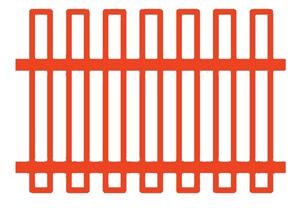
Wire fence fulfills a huge role in our modern lives, whether it is to keep animals or people safe and secure. It can be found in rural and urban settings, serving a variety of purposes such as restricting livestock on ranches or prison inmates to keeping animals at the zoo or keeping kids off a community pool. It also serves a myriad of security, safety, and industrial needs.
Generally, there are four types of wire fences. They differ in their construction, material, and how they are used.
Welded wire fences are built by positioning wires in a vertical and horizontal fashion that appear as squares or rectangles. They are then welded together with spot welding, making them sturdy and inflexible. These kinds of fences have small openings, which can prevent unwanted elements from entering your property.
The next kind of wire fence is the barbed wire fence, which has evenly spaced barbs that stick out from the side of the fence to ward off any animals or people that may try to break through. It is commonly seen around farms, prisons, and military sites. These types of fences are usually electrified with 2,000 to 10,000 volts, which will shock, but not severely hurt an animal or human.
Other types of wire fences include the woven wire fence and the chain-link fence. The latter is made from galvanized or linear low-density polyethylene-coated steel wire that is bent into a zigzag pattern. Its wires hook into those of the neighboring strand and then are bent back into place, which makes it difficult to climb. These are a more affordable option than other types of wire fencing and still offer an effective barrier against intruders.
Another type of wire fence is the powder-coated or vinyl-coated wire fence. This is a popular choice for residential use as it doesn’t require any special tools to install, such as post-hole diggers or a fence stretcher. These fences are coated with a protective layer that keeps them from rusting or being affected by moisture. They can be purchased in various colors to suit any home’s style and aesthetics.
All of these different kinds of wire fences are held upright by wooden fence posts that are either end, corner, or gate posts. They are often connected to these posts with a brace post. These posts are more stout and of a larger diameter than the other two posts, which helps them resist the tension caused by stretching the wire fence.
The best kind of wire for fencing is stainless steel, which doesn’t rust easily and resists corrosion. This material is highly durable and a good conductor of electricity. Other options for wire fencing include galvanized steel and aluminum. These are both rust-resistant, but the latter is less expensive than stainless steel and can stand up to harsh weather conditions. It is important to note that all of these different types of wire fences are available from a variety of online retailers or your local farm and ranch supply stores.
